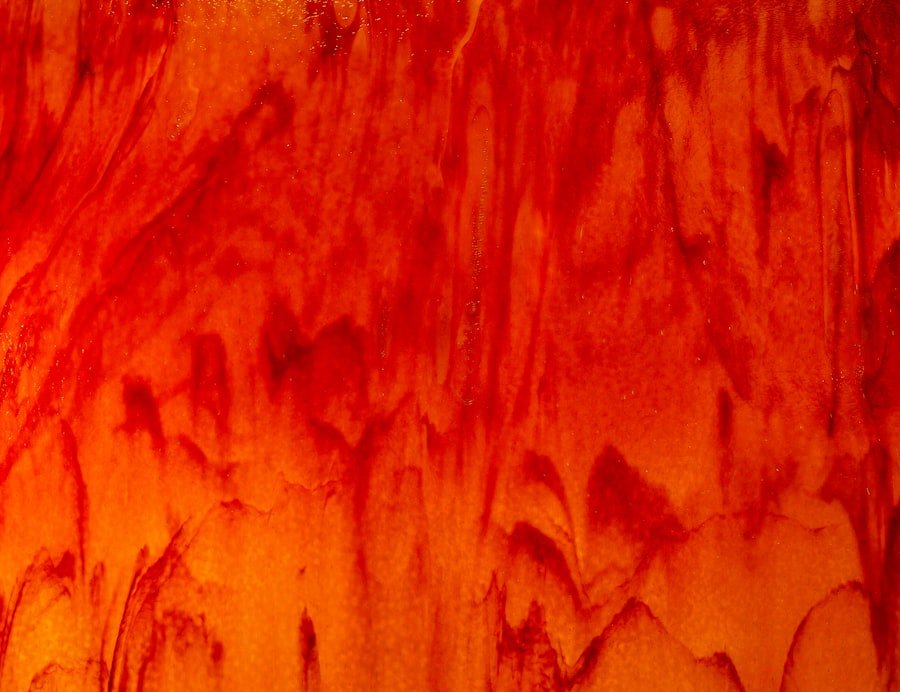Hives, medically known as urticaria, are raised, itchy welts that can appear on the skin. They can vary in size and shape, often changing rapidly, and may be accompanied by redness and swelling. These welts can appear anywhere on the body and can be triggered by a variety of factors.
While hives are typically harmless and may resolve on their own, they can be quite uncomfortable and distressing for those who experience them. Understanding what hives are is essential for recognizing their symptoms and seeking appropriate treatment. The appearance of hives can be alarming, especially for those who have never experienced them before.
They can emerge suddenly and may last for a few hours or several days. In some cases, hives can become chronic, persisting for six weeks or longer. This unpredictability can lead to anxiety and frustration, as individuals may find themselves unsure of when or why the hives will reappear.
By familiarizing ourselves with the nature of hives, we can better navigate the challenges they present.
Key Takeaways
- Hives are a skin reaction characterized by itchy, raised welts that can appear anywhere on the body.
- Common causes of hives include allergic reactions, stress, and certain medications or foods.
- Symptoms of hives include red, raised welts, itching, and swelling of the skin.
- There are two main types of hives: acute hives, which last for less than six weeks, and chronic hives, which last for longer periods of time.
- Diagnosing hives involves a physical examination, medical history, and possibly allergy testing or blood tests.
Causes of Hives
Allergic Reactions
One of the most common triggers is an allergic response to certain foods, medications, or insect stings. For instance, shellfish, nuts, and certain antibiotics are known culprits that can provoke hives in sensitive individuals.
Additionally, exposure to pollen, pet dander, or other allergens can lead to the development of hives in those with allergies.
Non-Allergic Factors
Beyond allergies, hives can also be caused by non-allergic factors such as stress, temperature changes, or physical pressure on the skin. For example, some people may develop hives after intense exercise or exposure to extreme temperatures.
Prevention and Management
Infections, both viral and bacterial, can also lead to hives as the body reacts to the invading pathogens. By recognizing these various causes, we can take proactive steps to minimize our risk of experiencing hives. Understanding these triggers is crucial for managing and preventing future outbreaks.
Symptoms of Hives

The primary symptom of hives is the appearance of raised welts on the skin, which can vary in size from small dots to large patches. These welts are often itchy and may cause a burning or stinging sensation. The intensity of the itching can vary from person to person, with some individuals finding it unbearable while others experience only mild discomfort.
In addition to the physical symptoms, hives can also lead to emotional distress due to their sudden onset and visible nature. In some cases, hives may be accompanied by other symptoms such as swelling of the lips, eyes, or throat, which can indicate a more severe allergic reaction known as angioedema. This condition requires immediate medical attention as it can lead to difficulty breathing or swallowing.
Recognizing these symptoms is vital for ensuring our safety and well-being when dealing with hives.
Types of Hives
Hives can be classified into several types based on their duration and underlying causes.
Acute hives are the most common form and typically last less than six weeks.
They often result from an allergic reaction or a specific trigger that can be identified.
Chronic hives, on the other hand, persist for six weeks or longer and may not have an identifiable cause. This type can be particularly challenging to manage as it often requires ongoing treatment and lifestyle adjustments. Another classification includes physical urticaria, which occurs in response to specific physical stimuli such as pressure, temperature changes, or sunlight exposure.
For instance, cold urticaria is triggered by exposure to cold temperatures, while heat urticaria occurs in response to heat. Understanding these different types of hives helps us tailor our approach to treatment and prevention based on our individual experiences.
Diagnosing Hives
Diagnosing hives typically begins with a thorough medical history and physical examination conducted by a healthcare professional. During this process, we may be asked about our symptoms, potential triggers, and any recent changes in our environment or diet. Keeping a diary of our symptoms can be helpful in identifying patterns and potential causes.
In some cases, additional tests such as blood tests or skin prick tests may be necessary to rule out underlying conditions or allergies. It is important for us to communicate openly with our healthcare provider about our experiences with hives. This collaboration allows for a more accurate diagnosis and effective treatment plan tailored to our specific needs.
By being proactive in our healthcare journey, we can better manage our symptoms and improve our quality of life.
Treatment for Hives

Medication Options
Over-the-counter options such as diphenhydramine or loratadine are commonly used and can provide relief for mild cases. For more severe or chronic cases, prescription antihistamines or corticosteroids may be necessary to control symptoms effectively.
Additional Treatment Approaches
Lifestyle ModificationsIn addition to medication, we should also consider lifestyle modifications that can help reduce the frequency and severity of hives. Identifying and avoiding known triggers is crucial in managing our condition effectively. Keeping our skin moisturized and avoiding hot showers or baths can also help minimize irritation. By combining medical treatment with lifestyle changes, we can take a comprehensive approach to managing hives.
Home Remedies for Hives
While medical treatments are often effective in managing hives, many individuals seek home remedies for additional relief. One popular option is applying cool compresses to the affected areas, which can help soothe itching and reduce inflammation. Oatmeal baths are another effective remedy; colloidal oatmeal has anti-inflammatory properties that can provide relief from itching and irritation.
Herbal remedies such as chamomile tea or peppermint oil may also offer soothing effects when applied topically or consumed as tea. However, it is essential for us to approach home remedies with caution and consult with a healthcare professional before trying new treatments. Some natural remedies may interact with medications or exacerbate symptoms in certain individuals.
Prevention of Hives
Preventing hives involves identifying and avoiding known triggers whenever possible. For those with food allergies, reading labels carefully and being cautious when dining out is essential to avoid accidental exposure. Additionally, managing stress through relaxation techniques such as yoga or meditation can help reduce the likelihood of stress-induced hives.
We should also pay attention to environmental factors that may contribute to hives. Keeping our living spaces clean and free from allergens such as dust mites or pet dander can help minimize exposure. By taking proactive steps toward prevention, we can significantly reduce the frequency of hives outbreaks.
When to See a Doctor
While many cases of hives resolve on their own without medical intervention, there are certain situations where we should seek medical attention promptly. If we experience difficulty breathing, swelling of the face or throat, or any other signs of a severe allergic reaction, it is crucial to seek emergency care immediately. These symptoms may indicate anaphylaxis, a life-threatening condition that requires urgent treatment.
Additionally, if we experience chronic hives that do not respond to over-the-counter treatments or if our symptoms worsen over time, it is essential to consult a healthcare professional for further evaluation and management options. Being vigilant about our health allows us to address potential complications early on.
Complications of Hives
While most cases of hives are benign and resolve without complications, there are instances where they can lead to more serious issues. Chronic hives can significantly impact our quality of life due to persistent itching and discomfort. This ongoing distress may lead to sleep disturbances, anxiety, or depression as we struggle to cope with the condition.
In rare cases, severe allergic reactions associated with hives can result in anaphylaxis, which poses a serious threat to our health if not treated promptly. Understanding these potential complications emphasizes the importance of seeking medical advice when necessary and taking proactive steps toward managing our condition effectively.
Living with Hives
Living with hives requires us to adopt a proactive approach toward managing our symptoms while maintaining a positive outlook on life. It is essential for us to educate ourselves about the condition and its triggers so that we can make informed decisions regarding our health. Connecting with support groups or online communities can also provide valuable resources and emotional support from others who understand what we are going through.
By focusing on self-care practices such as stress management techniques and maintaining a healthy lifestyle, we can improve our overall well-being while living with hives. Embracing a holistic approach allows us to navigate the challenges posed by this condition while still enjoying life’s many pleasures. Through awareness and proactive management strategies, we can find ways to thrive despite the presence of hives in our lives.
If you are concerned about your skin health, you may also be interested in learning about skin cancer detection techniques. Dr. Trisha Khanna provides valuable information on how to detect skin cancer early on in her article Hair and Scalp Conditions, providing insights on how to manage and treat these issues.
FAQs
What are hives?
Hives, also known as urticaria, are raised, red, itchy welts on the skin that can vary in size and shape. They are usually caused by an allergic reaction or other factors that release histamine into the skin.
What causes hives?
Hives can be caused by a variety of factors, including allergic reactions to food, medication, insect stings, or pollen. Other causes may include stress, infections, and exposure to extreme temperatures.
What are the symptoms of hives?
The main symptom of hives is the appearance of raised, red welts on the skin that are often itchy and can vary in size and shape. In some cases, hives may also be accompanied by swelling of the face, lips, or throat.
How are hives treated?
Treatment for hives may include over-the-counter antihistamines to relieve itching and redness. In more severe cases, a doctor may prescribe corticosteroids or other medications to reduce inflammation and relieve symptoms.
Can hives be prevented?
While it may not be possible to prevent all cases of hives, avoiding known triggers such as certain foods, medications, or insect stings can help reduce the risk of developing hives. Managing stress and maintaining a healthy lifestyle may also help prevent hives.


